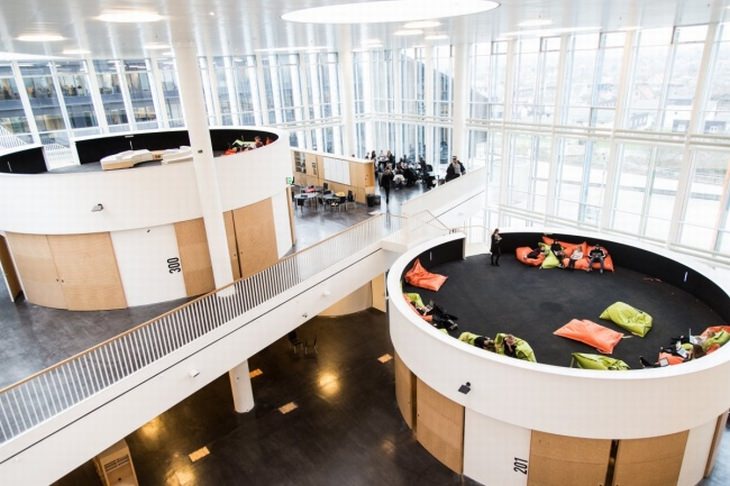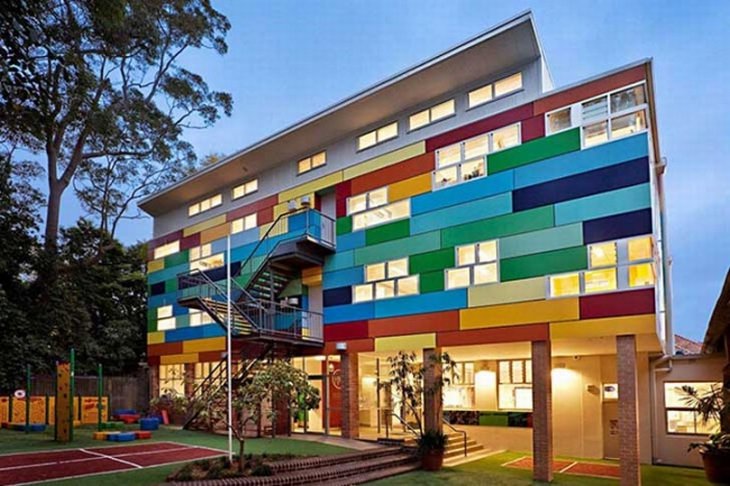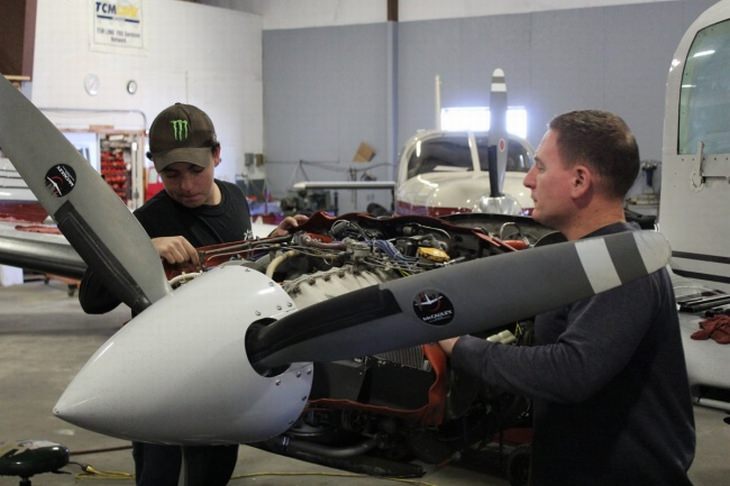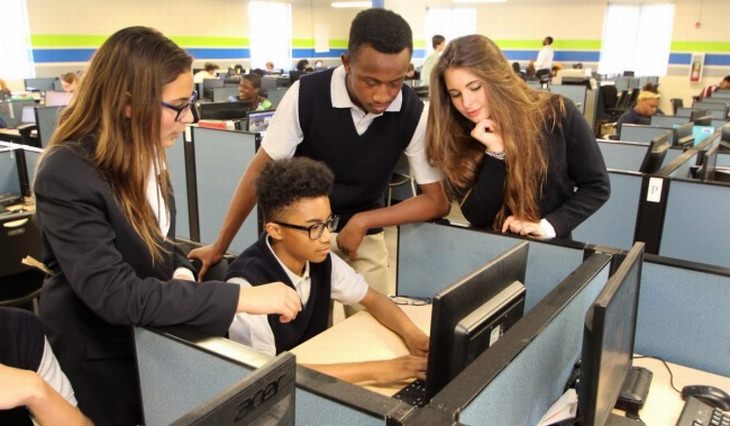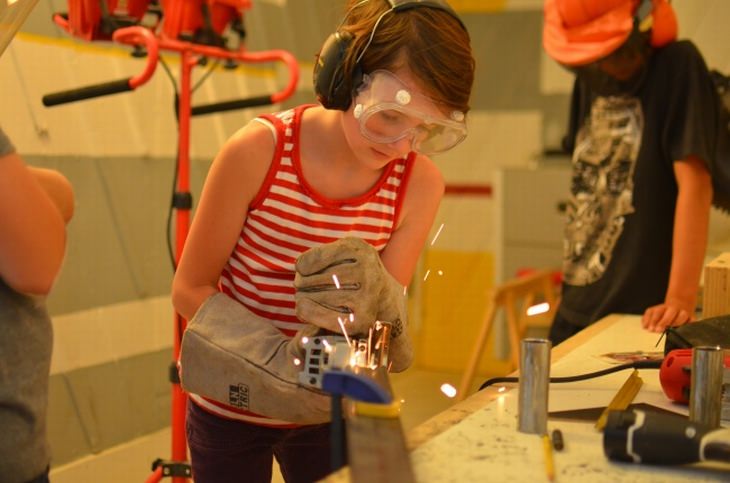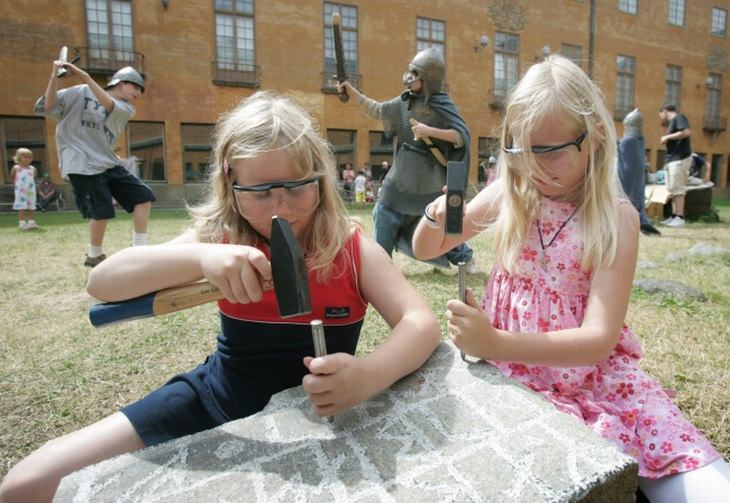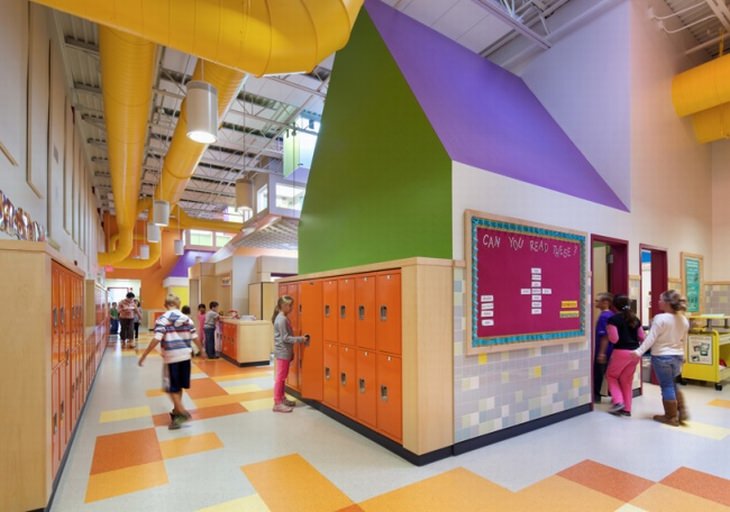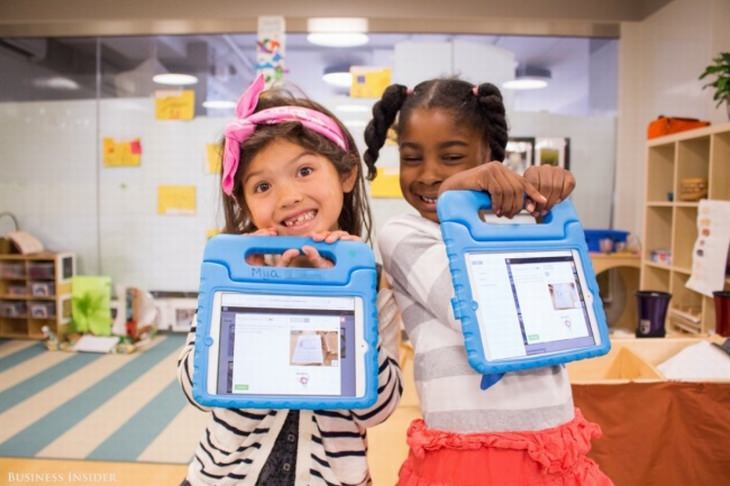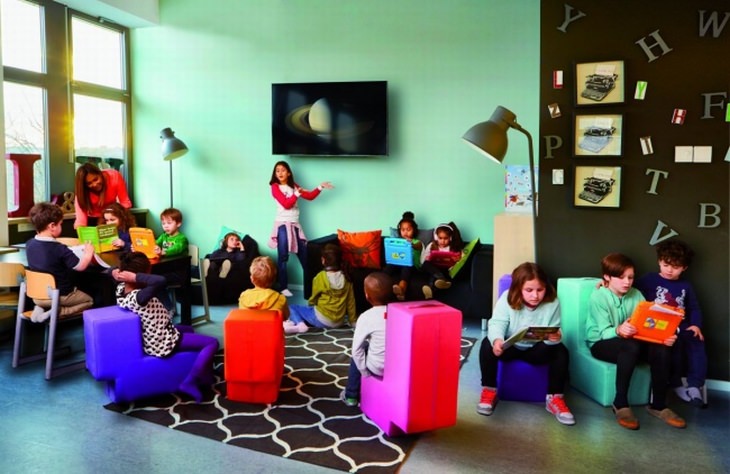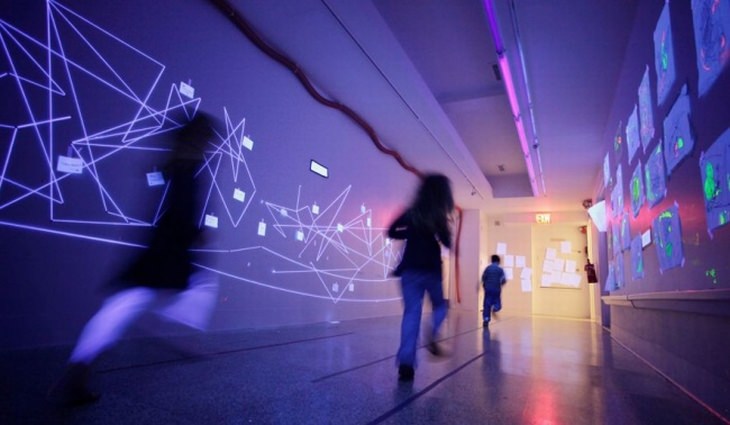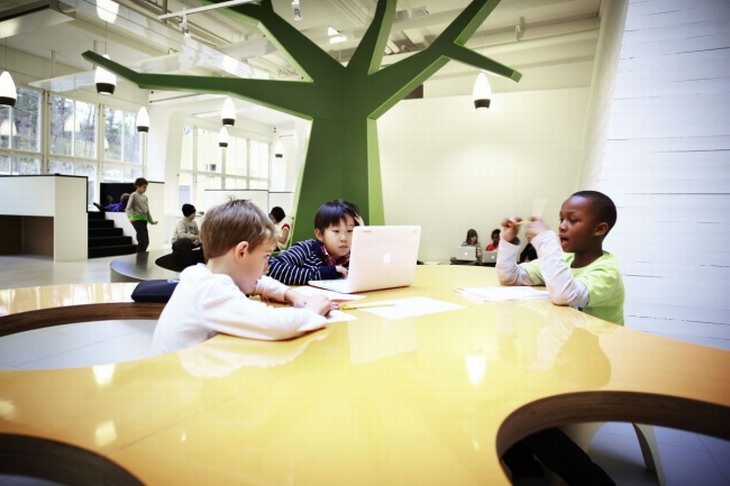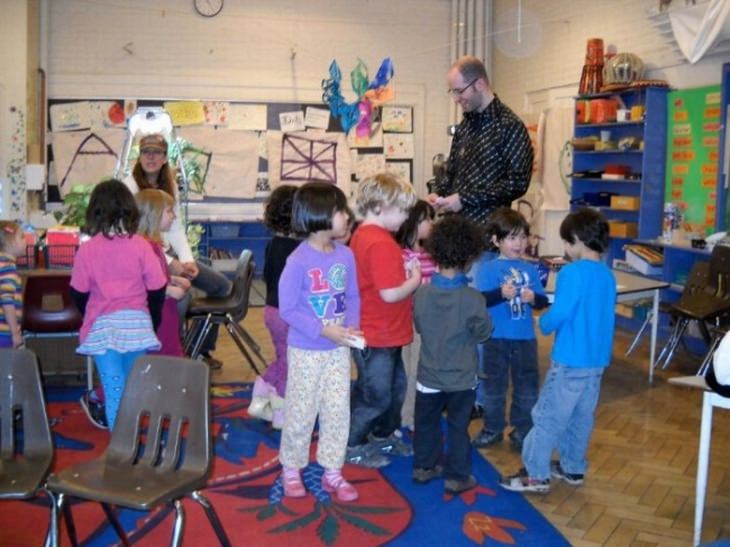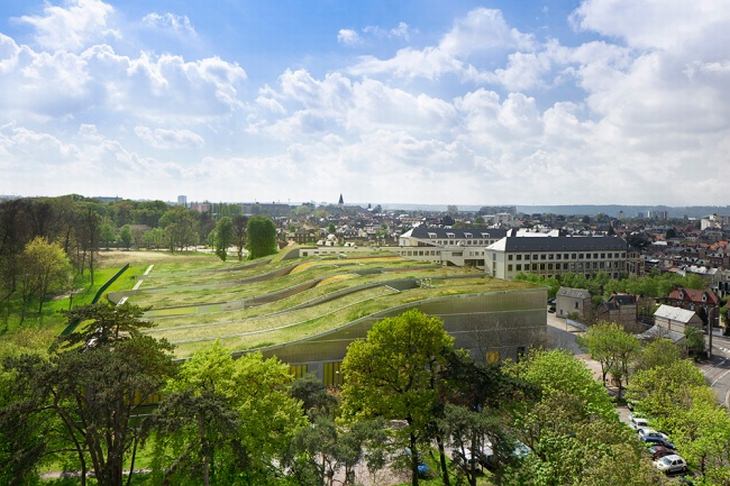Makoko Floating School, Lagos, Nigeria
This school, which caters to all age groups, was originally constructed to contend with the rising water levels in the lagoon in which it sits. It’s home to both numerous classrooms and play areas, and can safely support up to 100 children even in the most extreme of weather.
School in a cube, Copenhagen, Denmark
Imagine a 1,100-capacity high school that doesn’t have any interior walls. That’s what this school in a cube is, with the entire space being referred to as the gymnasium. The only separation that exists within it are the “drums”, which are elevated areas with comfortable seating that are designed to encourage the students’ flexibility and creative thinking.
A school with an individual approach, Australia
© wahroongaprep
This Australian school turned conventional educational wisdom on its head by developing learning plans for each individual student. These learning plans can easily be adjusted by parents or teachers, and the students themselves get to have a say on how to make the educational process work better for them. Classes are held in very small groups.
The hands-on school, Rhode Island, USA
At this institution, students are encouraged from a very young age to figure out what they like and what they want to be when they grow up. Once those things are established, they are paired with a mentor in their chosen field, and only taught what they need for their future careers. This teaching strategy is used at just 55 schools throughout the United States.
The office school, Ohio USA
In this school, each one of the 300 students sits in their very own cubicle. They have their own computer that guides them through an individual learning plan. They’re expected to work their way through it of their own accord, only asking for advice when they get stuck on something.
The school for dangerous things, San Francisco, California, USA
Imagine being allowed to do all the things that your parents told you not to when you were a kid. Those things are exactly what this school allows its students to do. They’re allowed to get dirty, play with fire and disassemble household appliances, among other things. This learning strategy is supposed to allow students to “co-author” their learning.
The gender-neutral school, Stockholm, Sweden
In Sweden, there’s a school that has done away with the notion of gender, rendering students completely equal to each other. The students are not referred to using feminine and masculine pronounce, such as “he” or “she” – they’re addressed using their first names, or as “they”. This concept is designed to fight stereotypes that students who feel different normally associate them with.
A rather bright elementary school, Stockholm, Sweden
This is a school that does away with the idea of a traditional library, employing multi-use “learning corridors” instead. This doesn’t mean that there aren’t quiet spaces – they’re just strategically placed within the corridors for when they’re needed. There’s WiFi access everywhere. The idea behind the layout is for it to foster interdisciplinary and inter-grade learning.
The school of Silicon Valley, San Francisco, California
As you would probably have guessed, this school has nothing to do with a regular one. Kids register their attendance on iPads, work through a “playlist” of activities, and use 3D modeling software to design playhouses. Students at this school are aged 4 to 14.
Steve Jobs school, Amsterdam, the Netherlands
The biggest emphasis that this school makes is on the individuality of its students. Their individual learning plans take their talents, skills and interests into account. The plans are evaluated every six weeks by a child, their parents and their coach (or teacher). Students aged between 4 and 12 attend this school.
The compassion and creativity school, New York, USA
“Playground-like” is a good way of describing this school, because it was built on the notion that schools themselves actually have to be more like playgrounds. Its founders believe that placing the emphasis on compassion and creativity encourages the students to devote more of their time to learning new things. Some of the activities relate to environmental issues, 3D modeling, among others designed to spark curiosity.
The mountain and cave school, Stockholm, Sweden
Yet another school on this list that does away with conventional classrooms also happens to be filled with mountains, caves and trees. The students perform their academic tasks on computers, however their learning also includes music, dance and art.
The school with no subjects, Toronto, Canada
This Canadian school blurs the line between teacher and student. In fact, the teachers are only allowed to observe and advise rather than force students into having to do or learn something. No homework is given, there are no assessments or strict schedules to speak of, and the students only attend the classes they really like. They’re free to choose how they spend their school day.
The “green” school, France
Every square inch of this school seems to be covered in lawn, and this is due to the belief that sitting in dusty classrooms does more harm than good. Students are encouraged to spend as much time in the outdoors as possible, and classes are even held outside when the weather is good enough.


